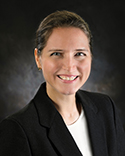Bloodborne Pathogens Terminology: Exposing the regulation one term at a time
Although the Bloodborne Pathogen Standard has been around over three decades, it continues to confuse employers. OSHA 29 CFR 1910.1030 is cited 300 to 500 times each year, making it a frequently violated regulation in Part 1910. Perhaps the confusion and noncompliance may be found in the very text of the standard — legal terminology that has been with the standard from the very beginning.
The Bloodborne Pathogens Standard defines 28 terms in its definitions section, so the use of these words and phrases may make this particular regulation a challenge for employers in general industry.
This webcast explores:
- Definitions of the key terms in the standard,
- OSHA’s intent, and
- Answers to your questions.
The better you understand the terminology, the easier, faster, and less costly your compliance efforts may be. So don’t miss out. Register today!
Register for this free webinar!
DATE: February 14, 2024
TIME: 2:00PM ET - 1:00PM CT - 11:00AM PT
Speakers:

Tricia Hodkiewicz
Editor – EHS
J. J. Keller & Associates, Inc.
Tricia Hodkiewicz has been an environmental, health, and safety editor at J. J. Keller & Associates Inc. since 1994. She provides content for manuals, handbooks, videos, signs, training materials, and online solutions. Tricia also writes the Compliance Focus newsletter bringing readers the latest OSHA, EPA, and DOT news. Tricia edits publications for the construction and warehousing industries and specializes in subjects like bloodborne pathogens, hazard communication, HAZWOPER, oil spills, EPCRA, signs and labels, and written plans.

Rachel Krubsack
Editor – EHS
J. J. Keller & Associates, Inc.
Rachel Krubsack is an Editor for Workplace Safety at J. J. Keller & Associates, Inc. She writes a monthly newsletter on OSHA safety training, answers questions from subscribers, and contributes content for other publications, including Safety Management Suite. Rachel’s topics of expertise includes hearing conservation, training requirements, bloodborne pathogens, emergency action plans, and hazard communication.
Duration: 1 Hour